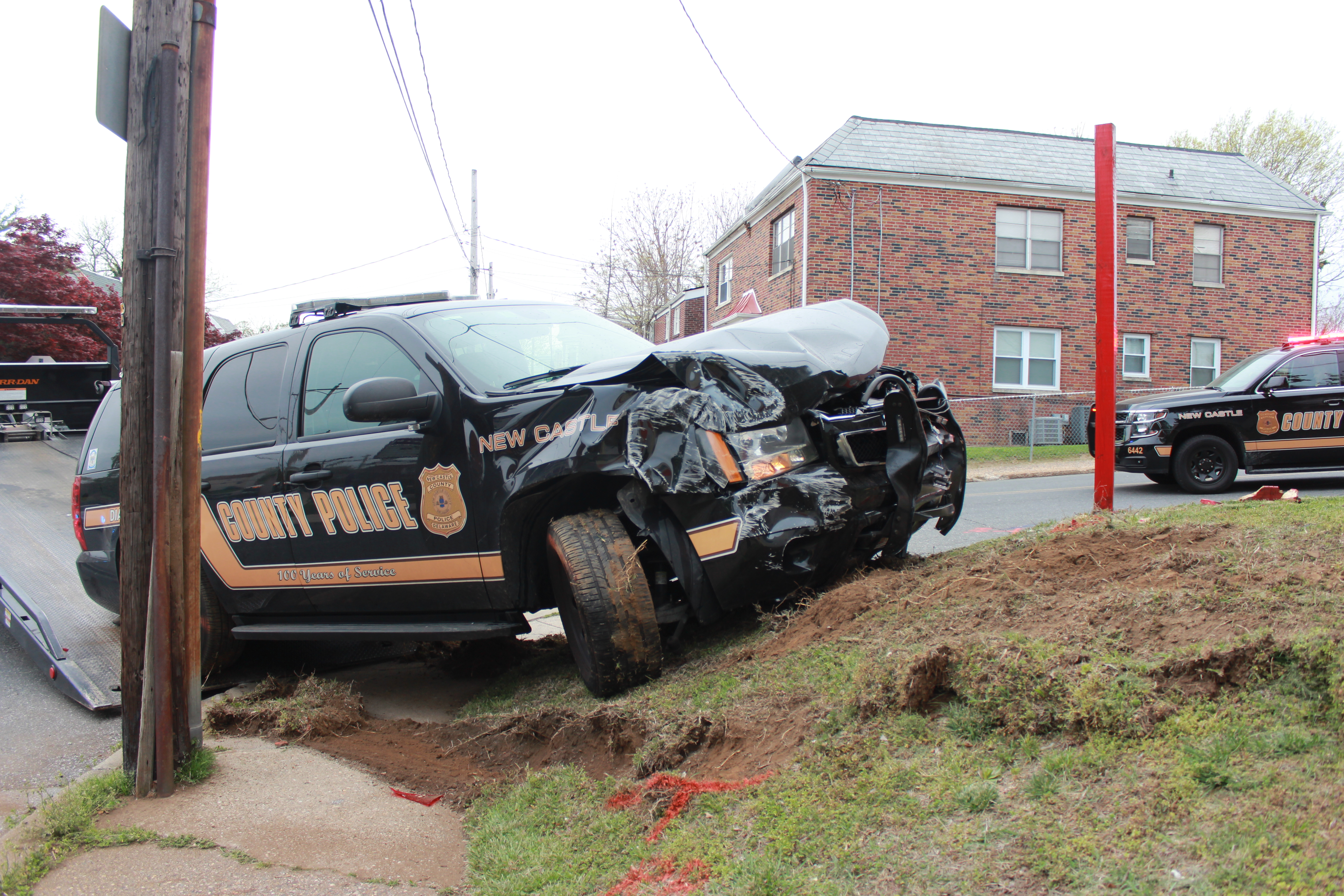This is the full text of the DOJ Report
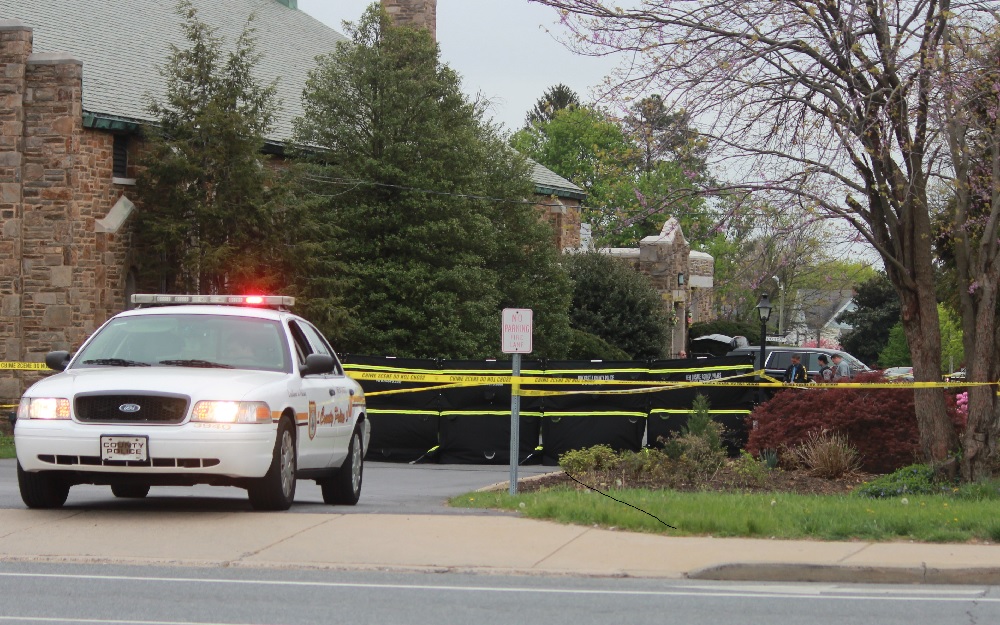
Scope of the Investigation
This is the final report of the Delaware Department of Justice, Office of Civil Rights and
Public Trust, arising out of the investigation of the use of deadly force by Officer Sean Sweeney- Jones (hereinafter referred to as “Officer Sweeney-Jones”) against Keith Price (referred to hereinafter as “Mr. Price”). The Office of Civil Rights and Public Trust reviewed evidence,
surveillance, body-camera videos, scene photos, reports written by officers who responded to the scene, the autopsy, and witness interviews. Attorneys with the Office of Civil Rights and Public Trust reviewed this use of force incident for the Department of Justice.
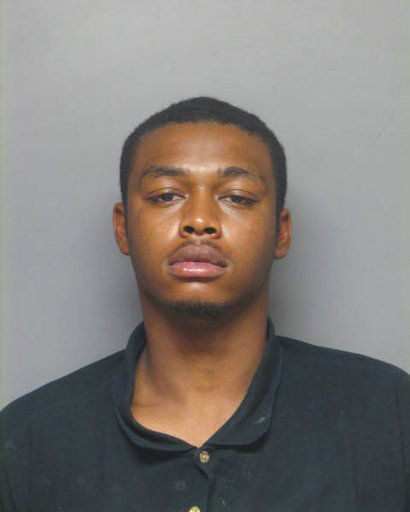
Purpose of the Department of Justice Report
The Department of Justice determines whether a law enforcement officer’s use of deadly force constitutes a criminal act. The Department of Justice does not establish or enforce internal police policies concerning the proper use of deadly force by law enforcement officers. Law
enforcement agencies are responsible for establishing and enforcing guidelines for the use of force by their officers and for determining whether an officer’s actions were consistent with such guidelines in a given case. This report expresses no opinion whether involved officer’s actions
complied with departmental policies or procedures.
Facts
New Castle County Police Detectives obtained an arrest warrant for Keith Price on charges of Attempted Murder First Degree, Possession of a Firearm by a Person Prohibited1 and Possession of a Firearm During the Commission of a Felony. The arrest warrant stemmed from events which took place on April 9, 2017. The arrest warrant was issued on April 18, 2017. The events leading to Mr. Price’s death took place on April 19, 2017, as officers sought to take him into custody.
Witness 1 purchased a 9 millimeter (hereafter “9 mm”) handgun for Mr. Price, as he could not legally purchase one himself. Witness 1 had previously purchased a .380 caliber firearm for Mr. Price. According to Witness 1, Mr. Price admitted that he used the .380 caliber firearm in a shooting2 and it fell out of his pants as he fled the area. Mr. Price told Witness 1 there was a $5,000.00 “mark” on his head as a result of the shooting. As such, he requested Witness 1 purchase another firearm for him, so that he could protect himself. Further, Witness 1 stated Mr. Price advised “[h]e would rather die than turn himself in. They would have to take him in a box.” According to Witness 1, Mr. Price “was adamant about it. He would rather die than go back to jail.”
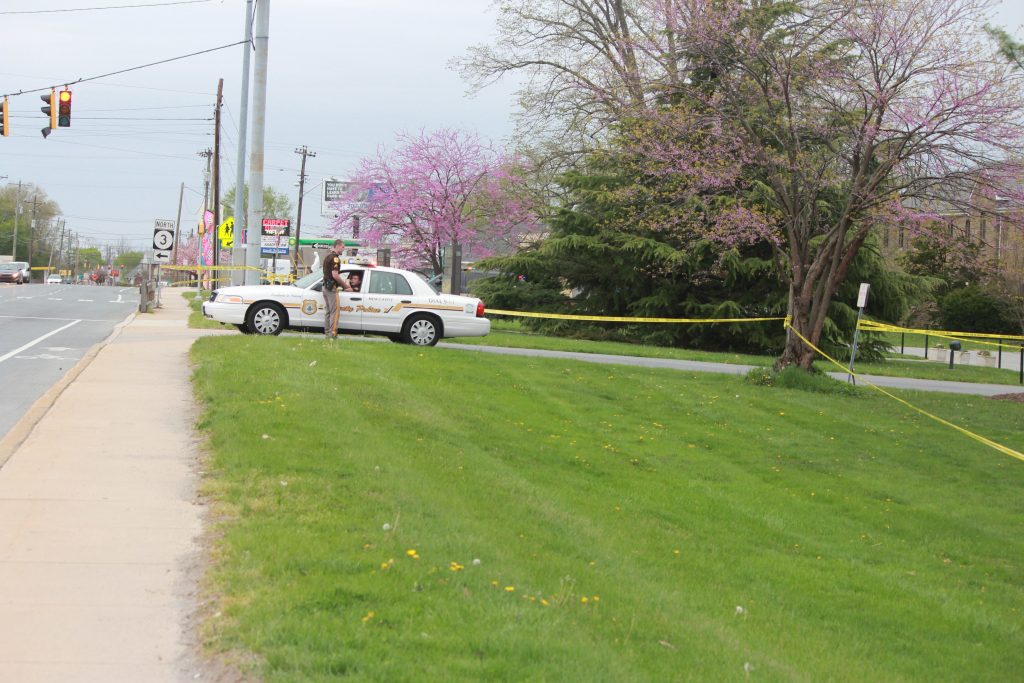


24th and North Market Streets
Undercover New Castle County Police Officers observed Mr. Price driving a green
Honda Accord during the afternoon hours of April 19, 2017. Detective M. George was operating
1 Price was prohibited from possessing a firearm due to a prior felony conviction for the offense of Carrying a Concealed Deadly Weapon. 2 Related to the events of April 9, 2017.
an unmarked car. He was aware Mr. Price was wanted for attempted murder and located him in
the green Honda. Detective M. George positioned his unmarked silver Nissan behind Mr.
Price’s Honda and called for assistance from uniformed patrol officers. Two patrol cars
responded, one operated by Officer O. George and the other operated by Officer Sweeney-Jones,
both of whom were in full uniform. These patrol officers were advised they were assisting with
apprehension of either a murder or attempted murder suspect.
The two patrol cars pulled in front of Price’s Honda. Mr. Price was the driver and only
occupant of the green Honda. The patrol officers ordered Mr. Price out of the car, and Officer
Sweeney-Jones reached for the green Honda’s door handle. The green Honda then backed into
Detective M. George’s vehicle.
Officer O. George heard the crunch of the Honda backing into Detective M. George’s
unmarked car as he brought his patrol car to a stop. He started to get out of his car and heard the
green Honda’s engine “rev up.” As Officer O. George got out of the car, he later described that
he feared being trapped inside his car and considered drawing his weapon. Instead, he jumped as
he exited the patrol car and used a nearby building for cover. The green Honda struck Officer O.
George’s patrol car. Scene photos depict damage to the driver’s door of Officer O. George’s
patrol car. Officer O. George was not injured.
Witness 2 was in front of his home and heard a car accident. He looked and saw officers
directing someone to get out of the car. Witness 2 described seeing an Officer either struck or
nearly struck by the car. He believed the officer fell down and said the car could have hit the
officer. Witness 2 stated Mr. Price tried to “kill him [Officer O. George] with his car.” Both
Officer O. George and Detective M. George remained at 24th and Market.
As the Honda fled, Detective M. George could not see Officer O. George. Detective M.
George believed Officer O. George might be underneath the green Honda or on the street.
Detective M. George pulled his department-issued firearm and fired three shots at the green
Honda driven by Price, as it drove around Officer O. George’s car and fled the scene.
Subsequent analysis of the green Honda revealed one copper jacket fragment behind the exterior
door handle of the rear-door on the passenger-side of the green Honda. This bullet entered from
the rear and did not break through the interior door paneling. Thus, one bullet struck the green
Honda but did not penetrate the interior of the vehicle.
After observing the green Honda strike Officer O. George’s vehicle, Officer Sweeney-
Jones gave chase in his fully-marked patrol car as the green Honda fled. K-9 Officer Mousley
also joined the pursuit. Officer Mousley’s body-worn camera (hereafter “BWC”) captured his
arrival near the scene of 24th and Market. Officer Mousely’s BWC captured three audible
gunshots, but the image did not reveal who had fired these shots. Officer Mousley remained in
his car and followed the green Honda. Officer Mousley arrived at 602 Philadelphia Pike three
minutes and twenty-five seconds later.
602 Philadelphia Pike
Mr. Price fled in the green Honda through the City of Wilmington. Ultimately, Mr. Price
collided with a Chevy pickup truck and a Volkswagen SUV at the intersection of Philadelphia
Pike and the Washington Street Extension. Delaware State Police Troop 1 and Saint Helena’s
Church are on opposite sides of Philadelphia Pike at this location.
After the collision, Mr. Price exited the green Honda and fled on foot, toward Saint
Helena’s Church. Subsequent processing of the green Honda revealed an empty gun case for a
Keltec 9 mm handgun in the center console. Officer Sweeney-Jones’ BWC footage captured the
events, but the first thirty seconds are without sound.3
The footage shows that Mr. Price ran behind tall bushes alongside the Church building. Officer Sweeney-Jones’ handgun is then visible in his hand, at approximately 14 seconds into the video. Mr. Price emerged from the bushes and slightly turned toward Officer Sweeney-Jones, with his right hand up and extended toward Officer Sweeney-Jones at approximately 18 seconds into the body camera footage.
When the footage is slowed, a gun is visible in Mr. Price’s right hand. In his subsequent
interview, Officer Sweeney-Jones stated he fired from the moment he heard a gunshot until Mr.
Price was down. The BWC footage shows Mr. Price fell forward onto the pavement, near stairs
at the building’s entrance. Mr. Price was moving. Officer Sweeney-Jones approaches Mr. Price,
then backed away. At this point, Officer Sweeney-Jones manually turned the body camera on,
which activated the sound. The audio recording from the BWC then reveals that Officer
Sweeney-Jones repeatedly shouted at Mr. Price to show his hands. Blood is then seen pooling
under Mr. Price’s body. Mr. Price lifted his head and looked around. Mr. Price’s right arm was
visible, but his left arm was still underneath him. Ballistics testing done at the request of the
DOJ confirm Officer Sweeney-Jones fired eleven shots.
Delaware State Police Troopers Eric Daniels, Damian Fuscellaro, Joshua Scaramazza,
and Brian Mulvena heard and saw the accident, and left Troop 1 to assist. Officer Sweeney-
Jones told these officers as they arrived on-scene, “he’s got a gun underneath him…he’s been
shot multiple times, he attempted to shoot at me.” Civilian witnesses observed the crash and the
foot pursuit from Philadelphia Pike toward Saint Helena’s Church. Civilian witnesses also heard
shots, but provided varying accounts of the number of shots fired. None of the civilian witnesses
interviewed saw an item in Mr. Price’s hands. Witnesses also provided various accounts of
whether or not they heard police issue commands to Mr. Price. Those civilians who heard
commands provided varying accounts of what they heard.
Witnesses 3 and 4 were walking together on church property and heard a crash. Seconds
later, they saw Mr. Price run out of the bushes, directly toward them. They veered away.
Witness 3 described Mr. Price’s hands as in a “running posture.” Witness 3 yanked Witness 4
away. Witness 4 also saw Mr. Price run out of the bushes and heard the officer shout, “Stop
3 According to the Axon User Manual, if the camera is in buffering mode, it will capture video but not audio and does not permanently record. Once the body camera is turned on “Event Mode,” it automatically backs-up the video to include the 30 seconds prior to activation but does not include sound. https://help.axon.com/hc/article_attachments/…/axon_body_user_manual.pdf
running!” Witness 4 saw nothing in Mr. Price’s hands. Witness 3 described hearing gunshots
after they turned the corner.
Officer Sweeney-Jones advises assisting officers from Delaware State Police that the gun
is under Mr. Price’s chest, by his left hand. On the BWC, Officer Sweeney-Jones and assisting
officers from Delaware State Police approached and ultimately cuffed Mr. Price. A loaded 9 mm
handgun was located underneath Mr. Price next to a cell phone. Ballistics testing compared the
spent shell casings at the scene to the gun found underneath Mr. Price and determined it had been
fired one time.4 On his body camera, Officer Sweeney-Jones is heard asking another officer to check him because, “he turned and shot at me, I don’t know if he got me.” Officer Sweeney-Jones also asks responding officers if Officer O. George was injured. Mr. Price was pronounced dead at the scene. The Medical Examiner determined that Mr. Price was shot seven times, specifically through the neck, torso and upper extremities. A brass-colored metal casing was located in the grassy area between the tall bushes and stairs to enter the building.
Conclusion
The State must determine if the use of deadly force against Mr. Price is a criminal act. Title
11 Section 464 of the Delaware Code defines the legal use of force in self-protection. It provides,
in pertinent part, that “[t]he use of force upon or toward another person is justifiable when the
[officer] believes that such force is immediately necessary for the purpose of protecting the
[officer] against the use of unlawful force by the other person on the present occasion.”
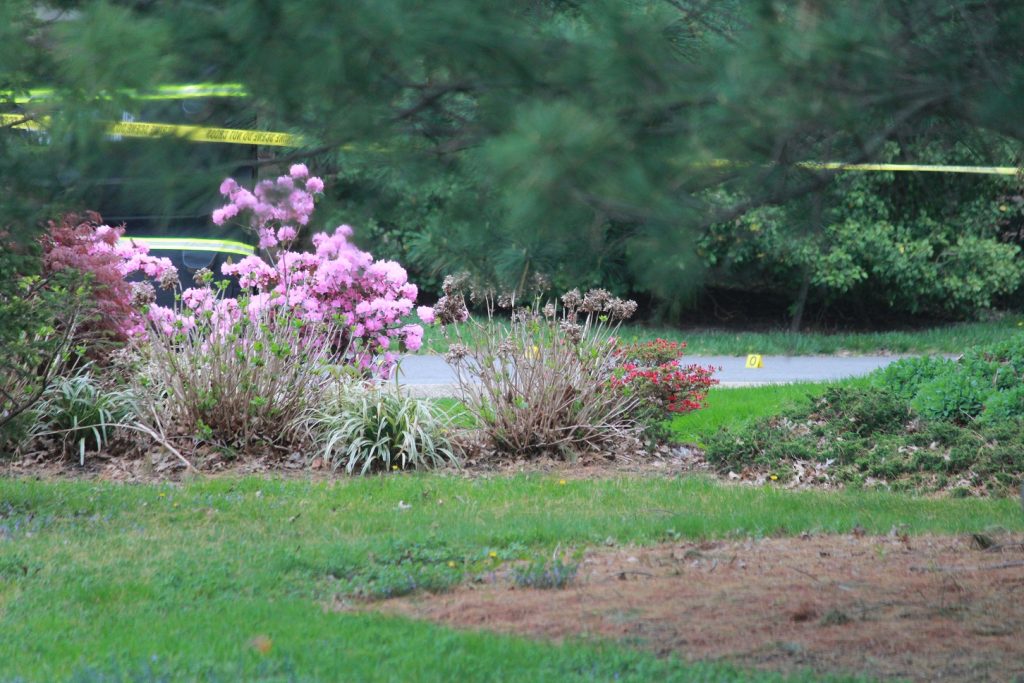
Under Delaware law, Officer Sweeney-Jones’ subjective state of mind is of critical importance in determining whether his use of force was justifiable. The specific factual inquiry is two-pronged. The first question is whether Officer Sweeney-Jones actually believed, at the time he intentionally fired his weapon, that such action was necessary to protect himself or others from death or serious physical injury. The second question is whether Officer Sweeney-Jones was reckless or negligent in having such belief, or in acquiring or failing to acquire any knowledge or belief, which is material to the justifiability of the use of force. 11 Del. C. § 470(a).
The facts known to Officer Sweeney-Jones upon his arrival at the Market Street location were that he was assisting with taking a suspect into custody for a violent offense. While on-scene, Officer Sweeney-Jones observed Mr. Price drive the green Honda into Officer O. George’s vehicle. At the time he continued his pursuit, Officer Sweeney-Jones was not certain that Officer O. George had avoided serious physical injury as a result of that collision.
This is a case where the officer’s BWC provides the perspective the officer faced as he pursued Mr. Price. The DOJ notes that witnesses did not see an item in Mr. Price’s hands.
4 Ballistics testing was critical to the State’s conclusion in this case. The State Forensic Firearms Examiner, who was indicted in 2018 and is pending prosecution, conducted the ballistics analysis in this matter. The ballistics evidence was re-examined at the State’s request, given its importance to this case. Both expert reports are consistent; the 9 mm handgun found underneath Mr. Price was fired one time. The DOJ strives to supply timely reports in these matters and understands that the individuals involved in this incident and their families have a reasonable expectation that the State will move quickly to investigate and reach conclusions. While not disagreeing with such expectations, the State must ensure that the information relied upon to reach these important legal conclusions is credible and reliable.
However, the time between Officer Sweeney-Jones exiting his vehicle on Philadelphia Pike and
the shooting itself took less than thirty seconds. During the immediate seconds prior to Officer
Sweeney-Jones firing his weapon, Mr. Price is out of view behind tall bushes. After he emerges
from the bushes, Mr. Price turns toward the officer with a firearm in his right hand extended toward
Officer Sweeney-Jones. A casing, which matches the firearm, is located in the grassy area between
the bushes where Mr. Price emerged and the stairs near where he fell. We have concluded,
consistent with the conclusion of two ballistics examiners, that Mr. Price fired his weapon at
Officer Sweeney-Jones at that point.
In addition to the direct evidence showing Mr. Price’s attempt to severely injure or kill
Officer Sweeney-Jones, circumstantial evidence proves that Mr. Price had the likely intent to
engage in a standoff with police if they attempted to arrest him and the means to carry out such
action. Witness 1 admitted to purchasing a 9 mm handgun for Mr. Price and advised he was aware
police were looking for him, and that he had no intention of going back to jail. Several officers
on-scene and physical evidence corroborate that a 9 mm handgun was located underneath Mr.
Price after he fell down. The green Honda driven by Mr. Price contained an empty gun case for
the same 9 mm firearm located under Mr. Price after he fell.
Based on the available evidence and the application of expert opinion to that evidence, we
have concluded that it was objectively reasonable for Officer Sweeney-Jones to believe that the
use of deadly force upon Mr. Price was immediately necessary for the purpose of protecting
himself and others from the unlawful use of deadly force by Mr. Price. For this reason, the
Department of Justice has concluded that the use of deadly force by Officer Sweeney-Jones upon
Mr. Price did not constitute a criminal offense under the laws of the State of Delaware.

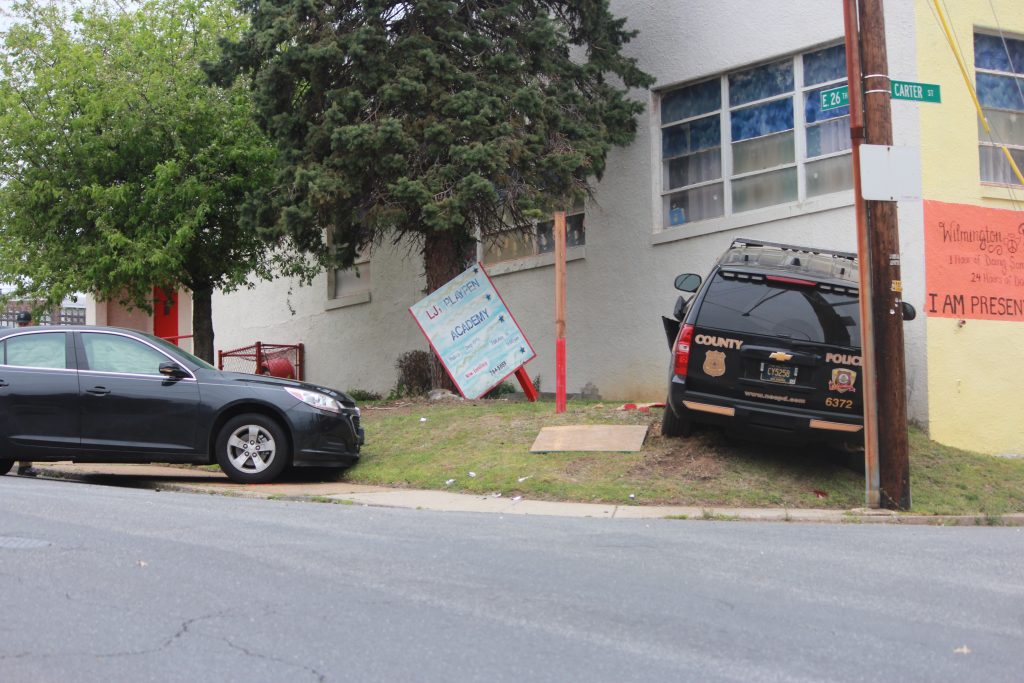
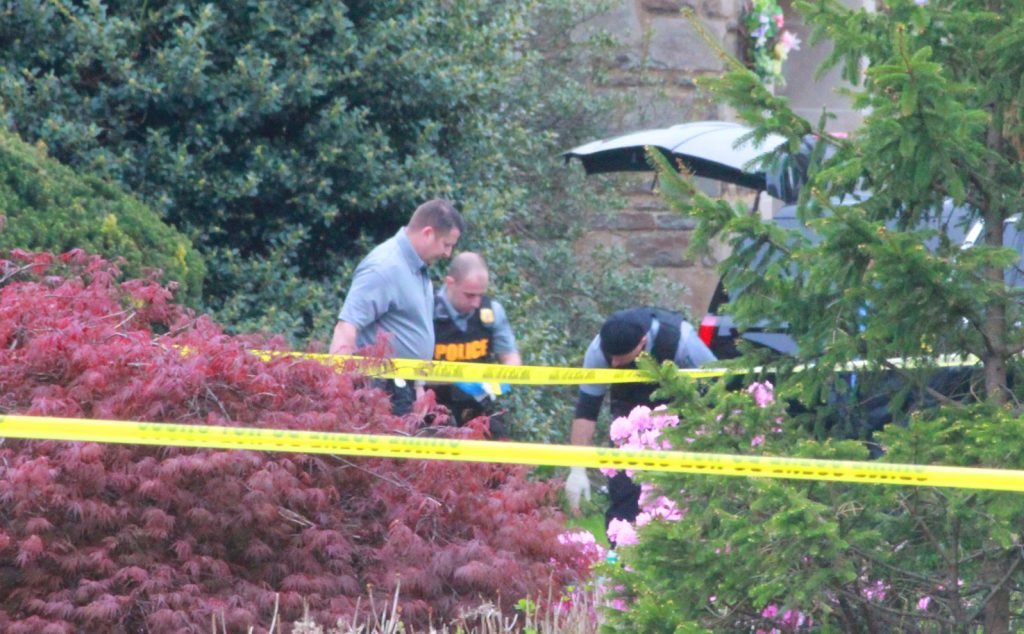

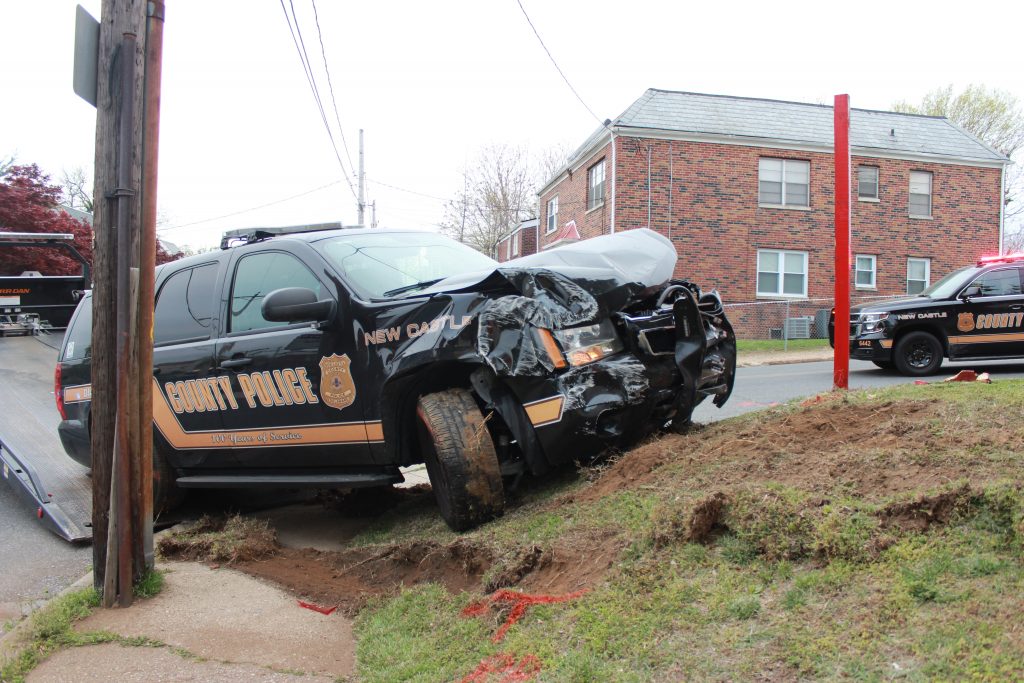
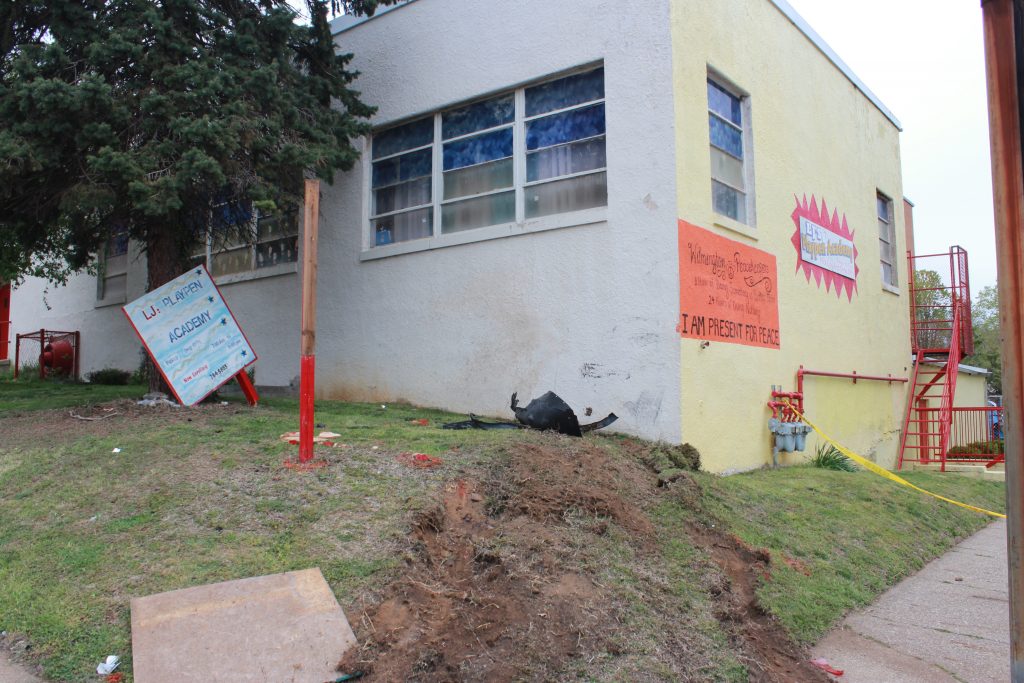
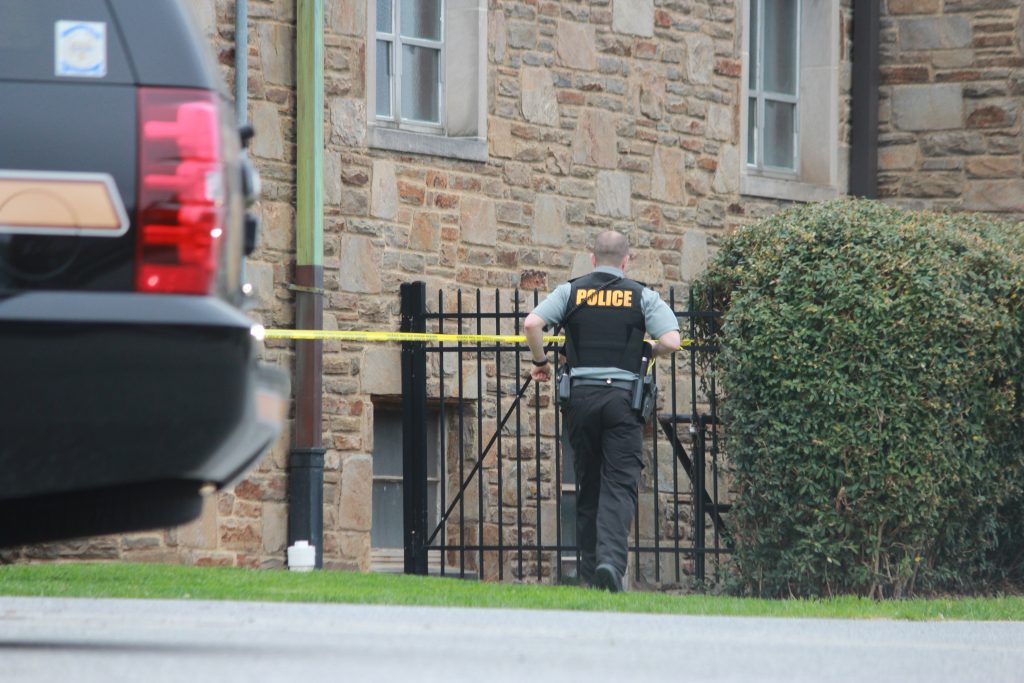
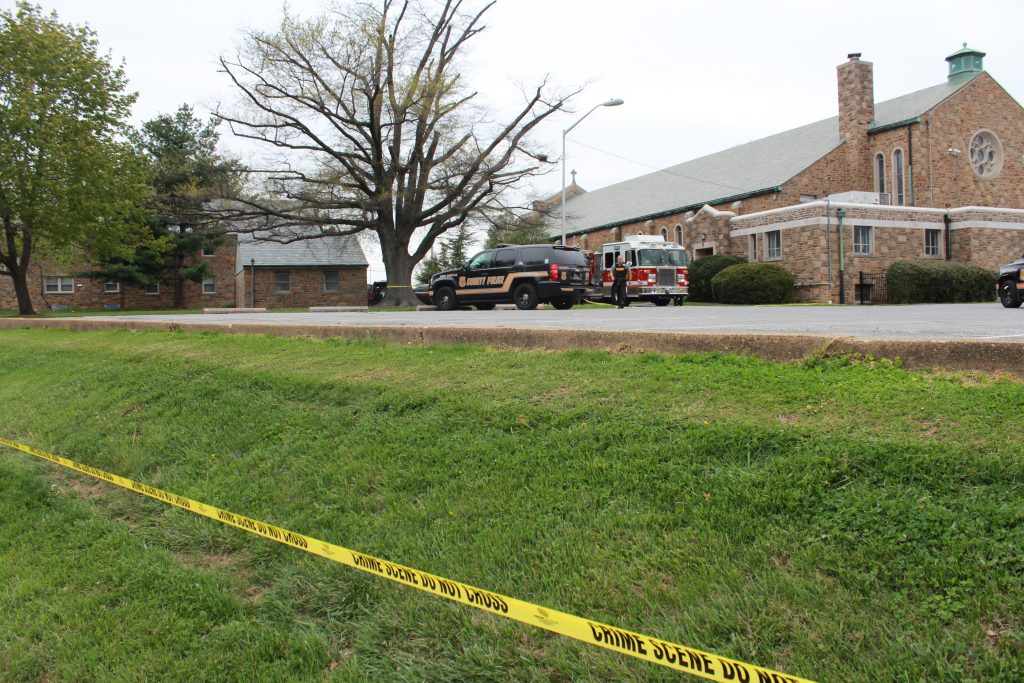
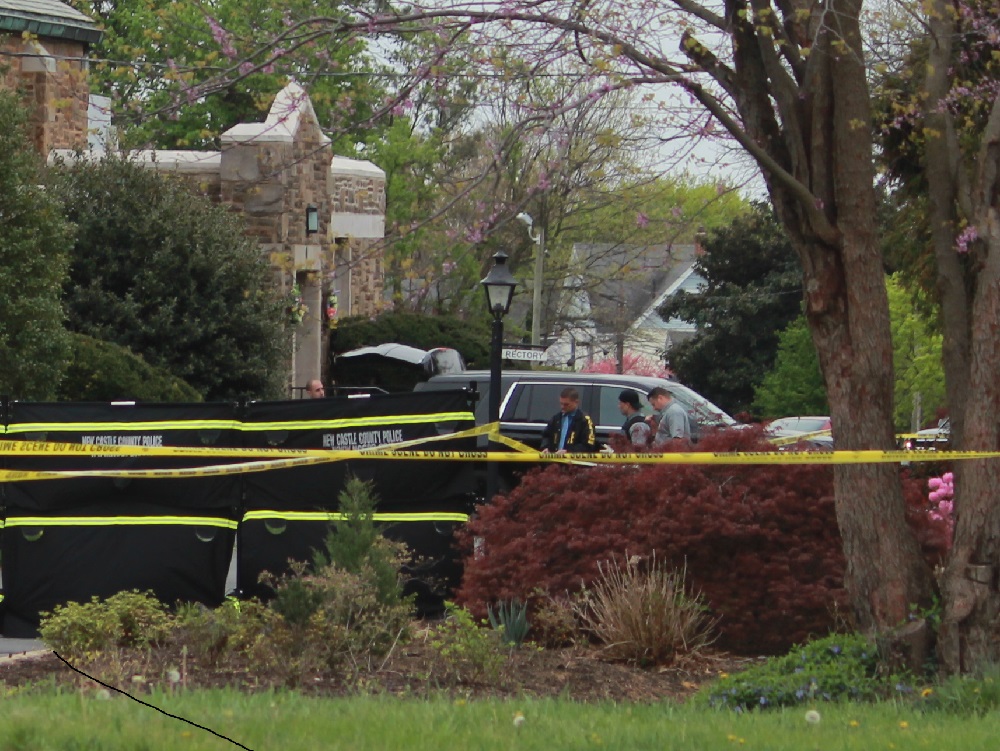
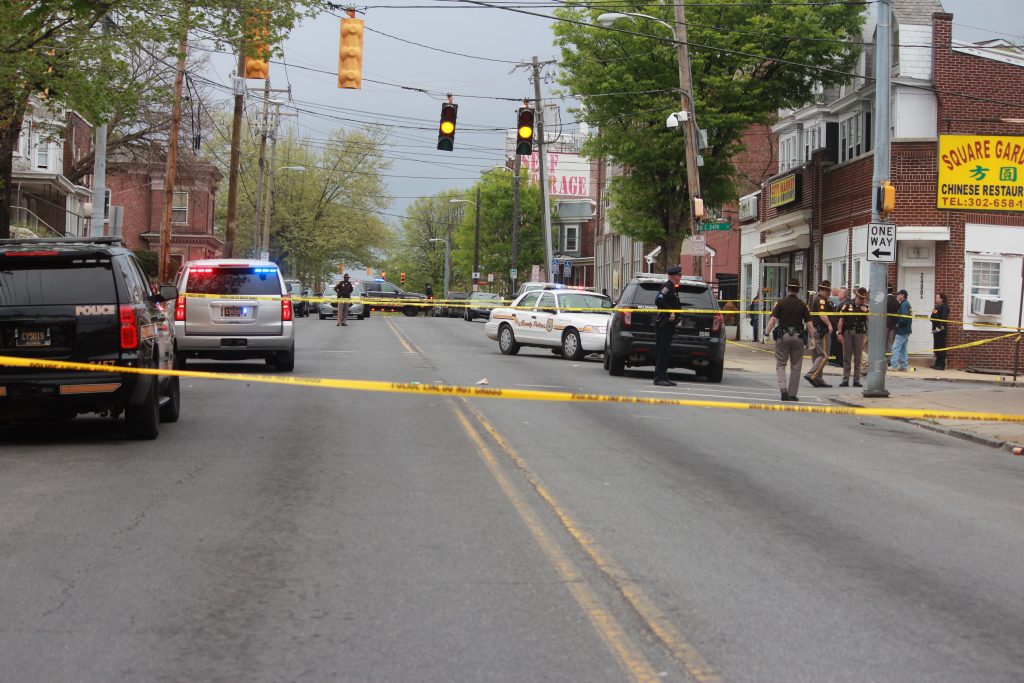
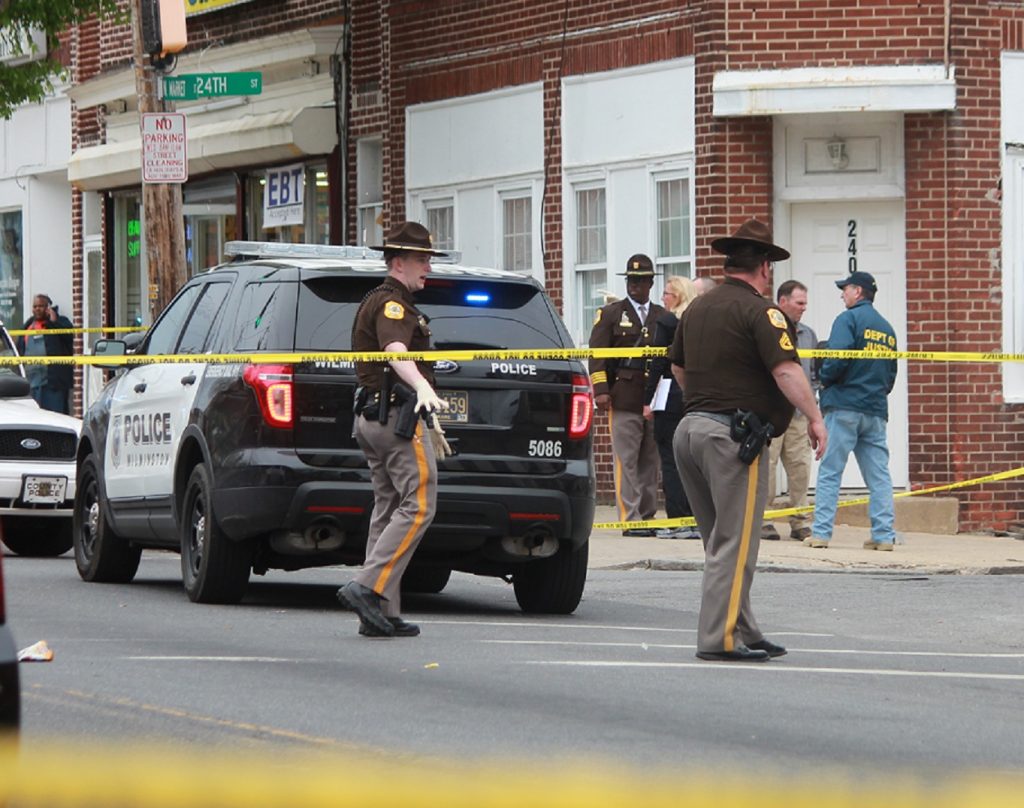
Chief Bond at the first crime scene talking with officials
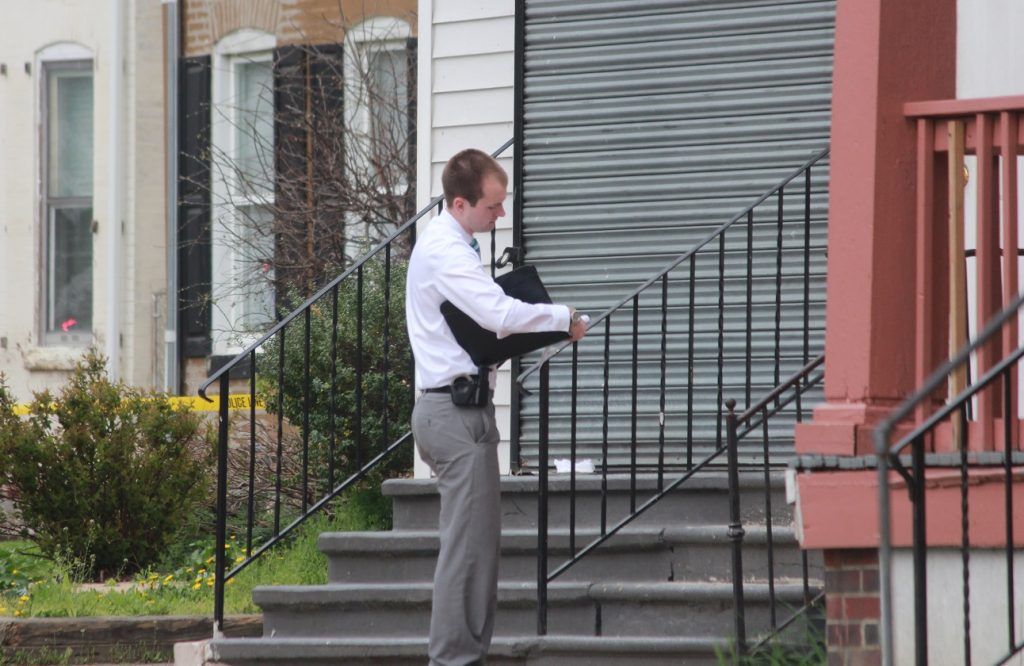
Detective canvassing the neighborhood at the original crime scene


